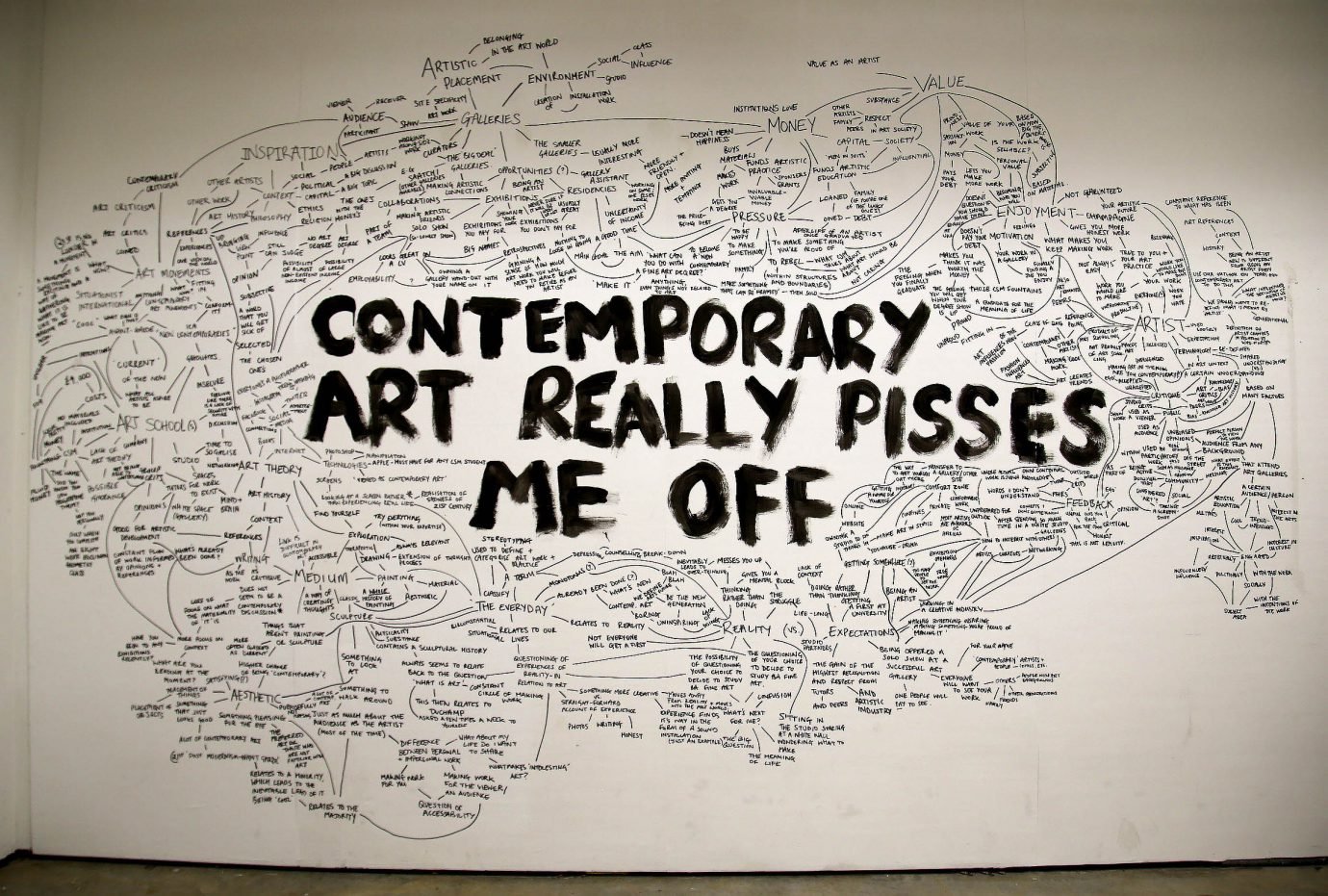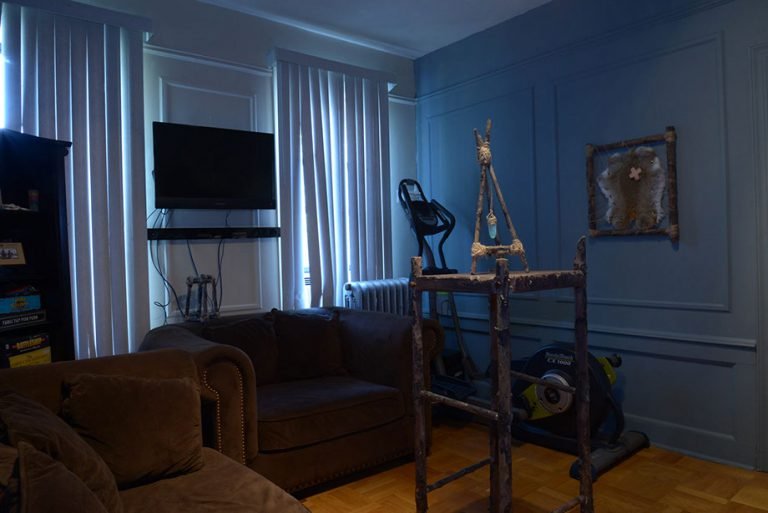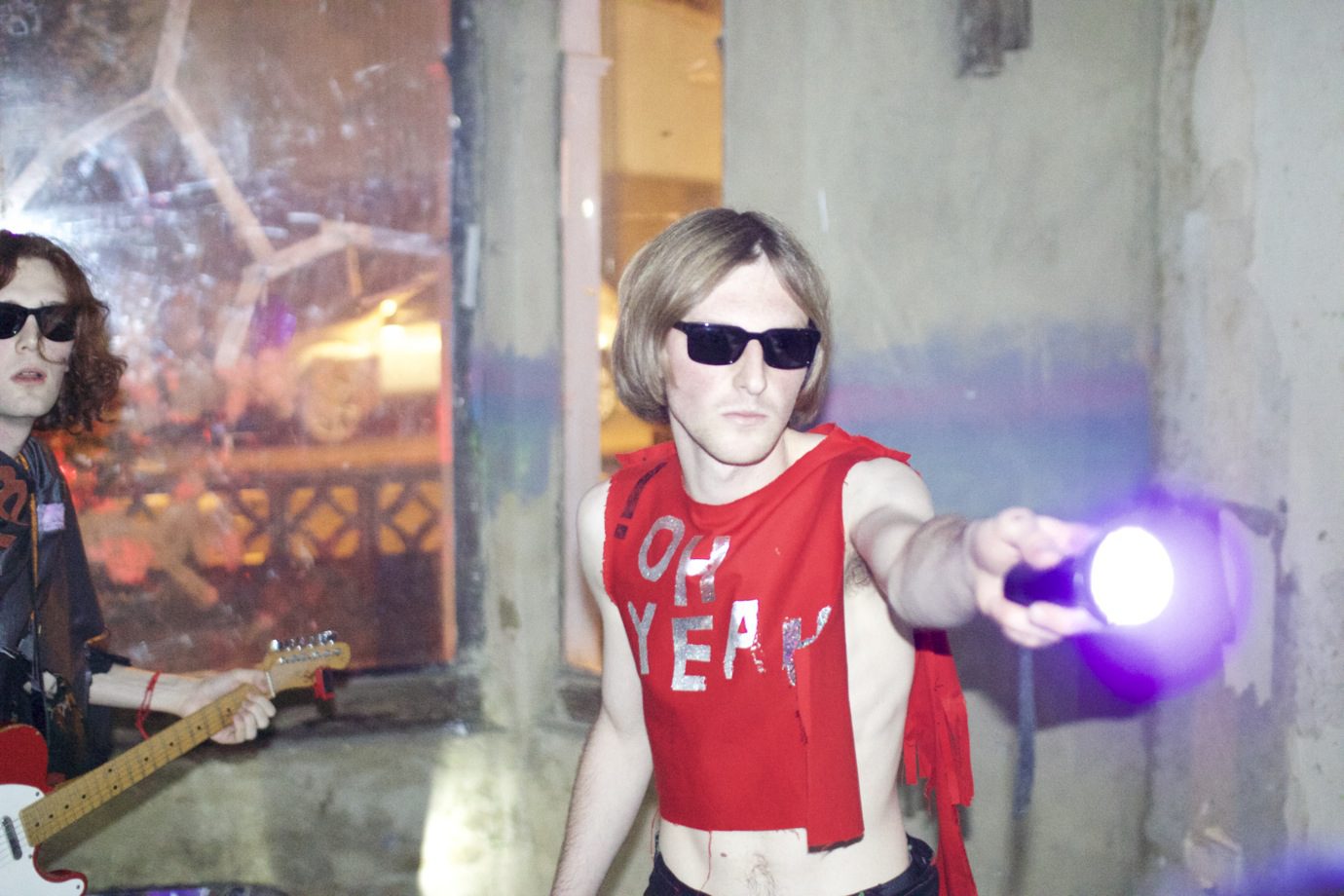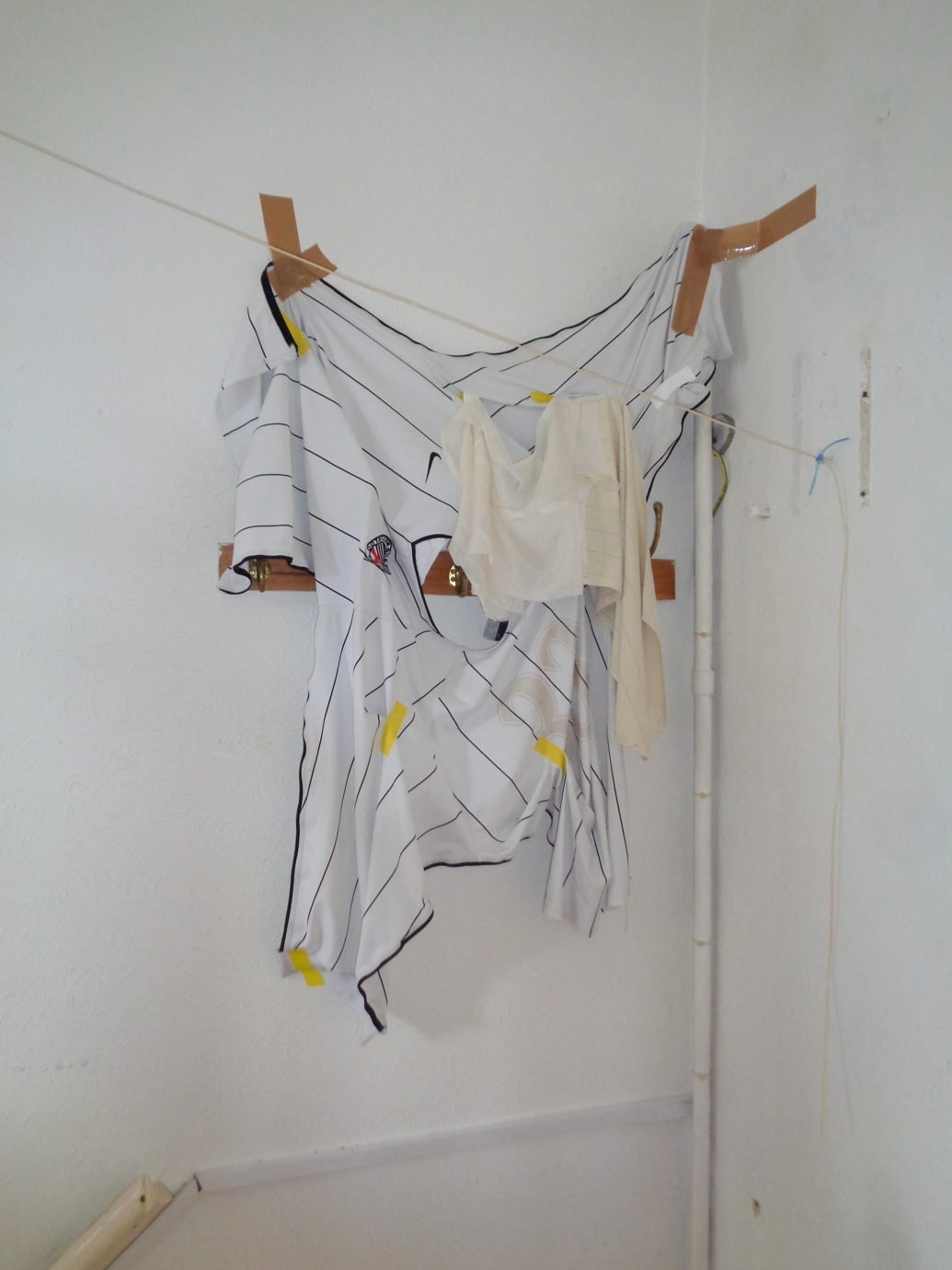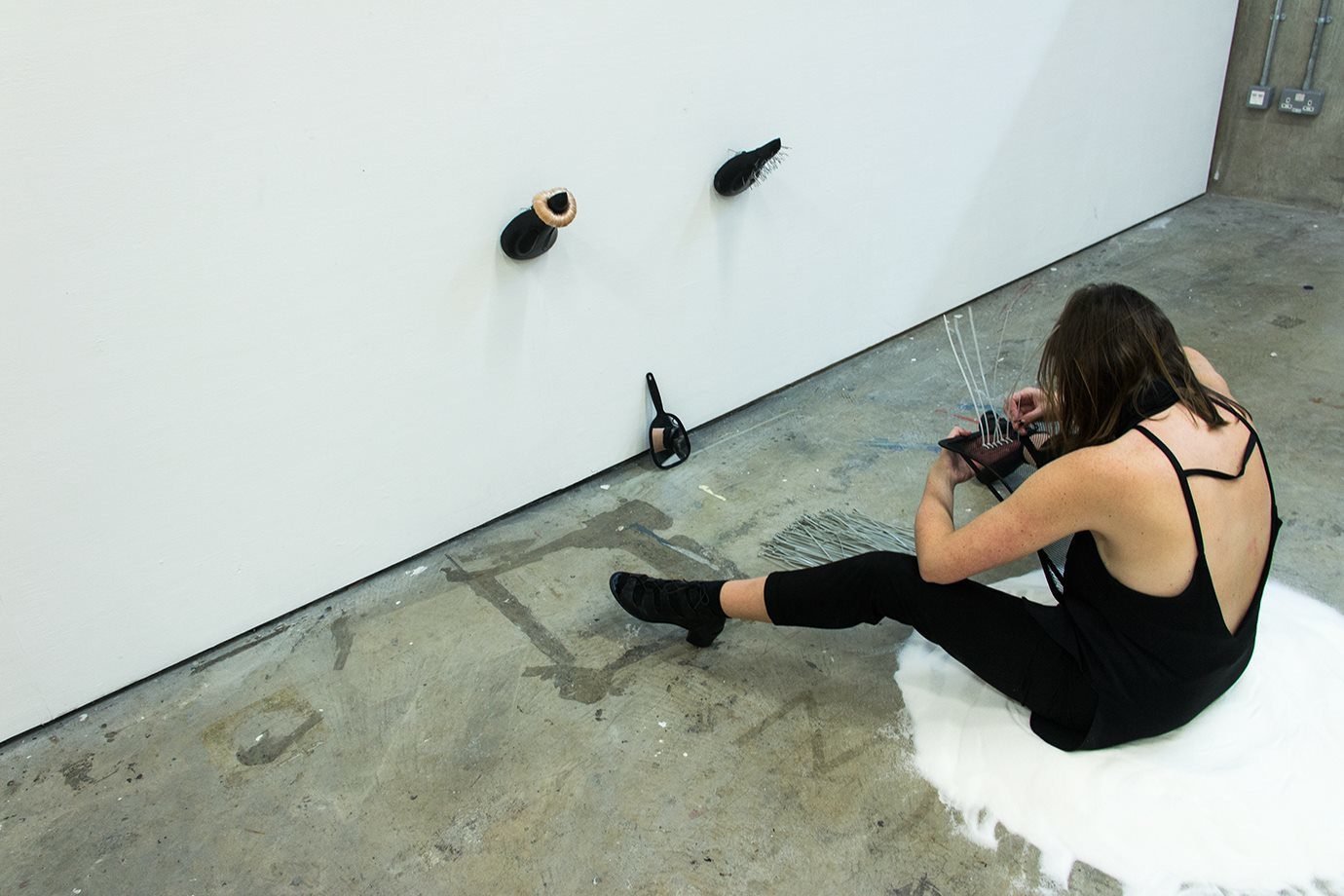“I LIKE HOW I AM DETACHED FROM MAKING MY WORK AND MY MACHINES DO THE WORK FOR ME.”
Why the machine?
Machines seem to make sense to me. I know what I want from a machine and how I want it to perform. It’s about having something so enormous that is creating something so slight. A huge painting machine to create tiny dots on a canvas or an aggressive shredder to make a tiny shred of paper. I like how I am detached from making my work and my machines do the work for me.
There are stages in the machines. For example with the paint machine, the dripping of the paint on the conveyer belt, the scraping of the paint onto the paddle, the flicking of the paint on the canvas, when the paint hits the canvas, when the paint drips down the canvas. The cogs are turning in the machine and the cogs are turning in the work. It’s happening at the same time. Or with the shredder you can see it in stages: the ideas being revealed, ideas being read, the moment the paper hits the shredder, the guzzle and sound of the shredder and the falling of the shreds to finally the reaching of the pile.
I like the idea that it can be turned on and off, I find it quite comical, really. I think this is also in the nature of machines. A switch can generate such motion that can generate work. There is a beauty to the simplicity of a machine. And a beauty to what a machine can achieve when left. I like that the machines are plugging away, churning and churning. I like that the mind can understand how the machine is working and see the clogs turning, so to speak. There is a confrontation that happens when you’re standing in front of the machines, while the work sort of does its own thing.
The experience for a viewer when you first turn the works on is radically different from the moment you turn them off. How do you negotiate that relationship?
What do we expect to see from a work in a gallery? Can something be a work in progress? There is no ‘optimum’ time for an audience to see the work. There is value in day 1 and value in day 15. This is the performance aspect to my work. Can an audience be privy to the work as it’s being made in a gallery setting?
“WHAT DO ARTISTS DO WITH THEIR REJECTED IDEAS? AND WHERE DO THE IDEAS GO WHEN THEY’RE REJECTED? WHAT IS AN ART IDEA AND WHAT IS A NORMAL IDEA?
Can you tell me about the process behind The Labour of Ideas, which you made in 2016?
A work is only as good as the idea. I thought there was something in how artists evaluate their ideas and also: what do artists do with their rejected ideas? And where do the ideas go when they’re rejected? What is an art idea and what is a normal idea? And where is the divide and why is there a divide? That’s where the ratings come in. I get bored incredibly quickly with my ideas and change my mind. But by doing so it means I jump from work to work. I felt a responsibility to nurture my ideas and give them space to breathe. I wanted them to have a moment to exist as something physical and not just in my head. Which is why I wrote them all down on paper, and gave them ratings.
Because the Artwork is always changing, when does the work begin and end?
The framework for the show is determined by the length of the show. Whenever I exhibit work I take into account the ‘active hours’ that the gallery is open for. The work relies on time and duration to be as realised as it possibly can. It’s crucial that the work is seen in stages and to be understood as something that builds and builds. I imagine if you’re a moving-image artist and you show your films on a loop, it’s the same response. All the moments are just as important as each other. There is no one scene more worthy than the other. I have this in my work. The paper pile is no better at 50cm than it is at 2m. It’s just different.
You can catch Cara Mills show until Sat, Feb 11, 2017 at Fiumano Projects.


